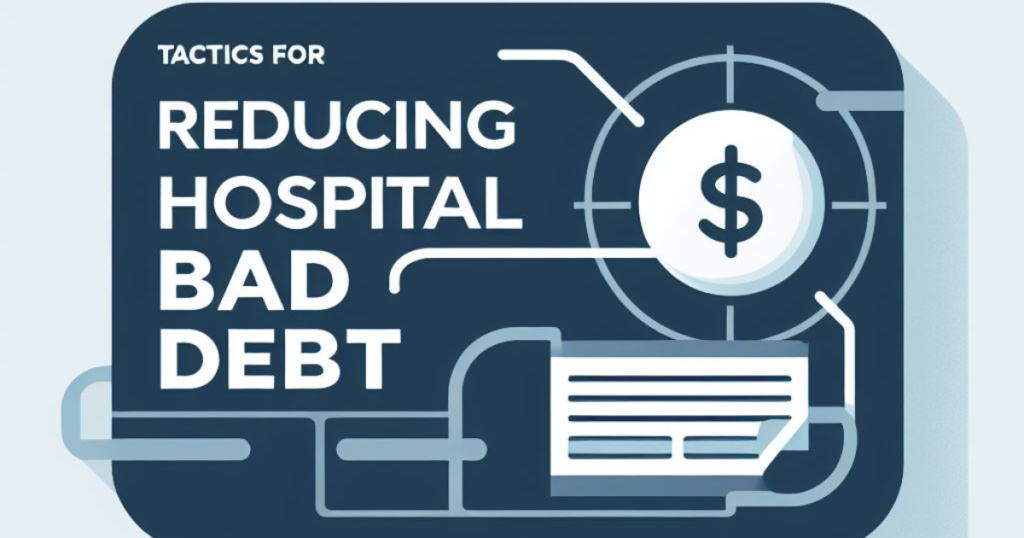
The US healthcare insurance market is an essential component of the country’s healthcare system. Millions of people and families receive coverage and support from robust healthcare insurance plans. Some of these include Medicare Advantage Plans, Medicaid MCOs, HMO Plans, PPO and POS Plans, and Private Commercial Plans, among other different insurance plan types.
To successfully navigate the credentialing and enrollment procedures it is necessary to participate in these plans. For this very reason as a healthcare provider, one must be familiar with the structure of the insurance sector. Here’s a peek into the world of the US Healthcare Insurance Industry.
Medicare Vs Medicaid
Medicare and Medicaid are the two government-funded healthcare programs in the United States.
People 65 and older are covered by Medicare, a federal government health insurance program/ It also covers some younger people with impairments. There are several sections in it:
Medicare Subscription Type
1. Part A (Hospital Insurance) covers inpatient hospital stays, skilled nursing facilities, hospice care, and home health care.
2. Part B (Medical Insurance) covers some medical procedures, outpatient treatment, medical equipment, and preventative services.
3. Part C (Medicare Advantage) offers a different way to get Medicare benefits from private insurance companies.
4. Part D offers coverage for prescription medication.
There are several Medicare applications that healthcare providers may need to fill out depending on their specific circumstances. Here are a few examples:
- CMS-855A: This is used for initial enrollment and revalidation of Medicare enrollment for institutional providers, such as hospitals and skilled nursing facilities.
- CMS-855B: This application is used for initial enrollment and revalidation of Medicare enrollment for group practices.
- CMS-855I: This application is used for initial enrollment and revalidation of Medicare enrollment for individual practitioners, such as physicians, nurse practitioners, and physician assistants.
- CMS-855O: This application is used for ordering and certifying eligibility for Medicare home health services.
- CMS-855S: This application is used for initial enrollment and revalidation of Medicare enrollment for suppliers of durable medical equipment, prosthetics, orthotics, and supplies (DMEPOS).
- 855R: This application is used to reassign Medicare benefits from one provider to another.
Medicaid, on the other hand, is a joint federal-state initiative that provides health insurance to individuals and families with low incomes and limited resources. The program covers a range of medical services, including doctor visits, hospital stays, and long-term care. State-by-state Medicaid eligibility rules and requirements differ, but most people with incomes below a certain threshold can sign up for the program.
Medicare Advantage Plans
The Individuals who are eligible for Medicare are covered under this private care plan. These plans serve as an alternative to traditional fee-for-service Medicare. Here are some key points about Medicare Advantage Plans:
- Offered by private insurance companies that contract with the federal government to provide healthcare services to eligible beneficiaries.
- Provides other benefits like vision, dental, and hearing services.
- Credentialing and enrollment for healthcare providers in Medicare Advantage Plans can vary by plan and they must comply with plan-specific regulations to participate.
- Provide reliable reimbursement for healthcare services, which can help healthcare providers maintain financial stability.
The following are some essential details about Medicare Advantage Plan enrollment and credentialing:
- Credentialing: Before being given consideration for participation, healthcare professionals must first satisfy certain criteria set forth by Medicare Advantage Plans. These requirements can differ from one plan to the next but often include standards like:
- Must have a valid medical license for the state or states in which they practice.
- Must be board certified in their specialty and have the required education, experience, and training.
- The healthcare provider needs malpractice insurance.
- Enrollment: After a healthcare provider has obtained the necessary credentials, the enrollment procedure can be started. A Medicare Advantage Plan enrollment application must be submitted, and the contract conditions must be agreed to.
- Contract Negotiation: To specify the payment schedule, the range of the services offered, and other specifics provider then negotiates the contract.
- Re-Credentialing: Healthcare workers in Medicare Advantage Plans must undergo re-credentialing every few years to ensure they are still adhering to the plan’s requirements.
Medicaid Managed Care Organizations (MCOs)
This insurance program supports individuals and families who are Medicaid-eligible. MCOs are a crucial component of the US healthcare insurance industry since they serve as a link between patients and healthcare providers.
Key things to keep in mind about MCOs:
- They work for the government under state regulation.
- Offer coverage for prescription drugs, preventative care, primary care, specialized services, and hospitalization.
- They provide access to a sizable patient pool, which could result in an uptick in both patient volume and revenue.
The Medicaid MCO enrollment and credentialing procedures can differ from state to state and from MCO to MCO. However, the method often entails the following steps:
- Apply: Fill out an application with the MCO and provide details and supporting documents about their training, education, license, and malpractice insurance.
- Review: To find out if the provider complies with the credentialing requirements, the MCO will examine the provider’s application and any supporting documentation.
- Contract Negotiation: The provider will proceed into a contract negotiation with the MCO to determine payment rates, services provided, and other terms if they are granted credentialing.
- Enrollment: Following the execution of the agreement, the provider will be formally enrolled in the MCO and qualified to start serving Medicaid enrollees.
Types of Medicaid Managed Care Organizations (MCOs) Plans
Health Maintenance Organizations (HMO) Plan
HMO plans are designed to provide comprehensive healthcare coverage for their members by offering a network of healthcare providers, including primary care physicians, specialists, hospitals, and other healthcare facilities.
Preferred Provider Organizations (PPOs) Plan
A type of managed care health insurance plan that contracts with healthcare providers and facilities to offer services to their members at discounted rates. PPOs offer greater flexibility than HMOs in terms of choosing healthcare providers and do not require referrals for specialist care.
Point of Service (POS) Plan
POS plan stands for Point of Service plan, a type of healthcare plan that combines features of both HMO and PPO plans.
- It gives more flexibility than conventional HMOs, but often calls for a primary care physician and specialist referrals.
- Some private insurance providers provide POS plans, and employer-sponsored health insurance may also offer them as a choice.
The following are a few significant POS plan benefits:
- More flexibility: In comparison to HMOs, which normally require individuals to select a primary care physician and receive referrals for specialized care, POS plans provide patients more freedom to choose their healthcare providers.
- Cheaper out-of-pocket costs: POS plans usually come with cheaper copays and deductibles for patients than PPO plans. Healthcare may be more reasonably priced for individuals and families as a result.
- Greater control over healthcare expenses: Patients who elect for a POS plan can choose between receiving their medical care from in-network or out-of-network doctors. People can better manage their healthcare spending thanks to this, and they may be more equipped to make healthcare decisions.
Private Commercial Plans
These are typically offered by health insurance companies and are purchased by individuals or provided by employers as part of employee benefits packages. These plans can be either self-funded or fully insured.
Children’s Health Insurance Program (CHIP)
Children in low-income households are covered under the federal-state partnership healthcare program – CHIP.
- A variety of services are covered by the program, including doctor visits, prescription medications, dental work, and more.
- It contributes to lowering healthcare costs for families by assuming the majority of children’s medical costs
- The size of the family and household income determine eligibility for CHIP.
Veterans Affairs CHAMPVA Plan
CHAMPVA stands for the Civilian Health and Medical Program of the Department of Veterans Affairs. It provides health care benefits for the spouses and children of permanently disabled or deceased veterans.
- CHAMPVA covers most medical services and supplies
- Beneficiaries are responsible for cost-sharing
- Providers who participate in Medicare or TRICARE (the military health care program) can also provide services to CHAMPVA beneficiaries.
- To enroll in CHAMPVA, beneficiaries must submit an application along with proof of their relationship to the veteran and their income information.
- CHAMPVA is separate from other VA health care programs, such as VA medical centers or clinics, and has its own rules and benefits.
Summary of Key Regulatory Bodies and Their Roles
The government monitors the insurance industry to shield consumers and ensure fair business practices.
- The Affordable Care Act (ACA) – Affects the structure of the US Healthcare Insurance Industry.
- The Centers for Medicare & Medicaid Services (CMS) – The key regulatory body responsible for overseeing Medicare and Medicaid programs.
- The National Association of Insurance Commissioners (NAIC) – Develops model laws and regulations for the insurance industry.
- The Department of Health and Human Services (HHS)– Oversees various aspects of the healthcare industry.
- The Health Resources and Services Administration (HRSA) – Focused on improving access to quality healthcare for underserved populations through support, programs, and grant funding.
The regulatory landscape is constantly evolving, and healthcare providers must stay informed and adapt to changes in the Healthcare insurance industry. To learn more about the structure and importance of the Insurance Industry, also check – HIPAA Breaches: Why Do They Keep Happening and What Can We Do About It, or feel free to contact us.
References
- Centers for Medicare & Medicaid Services. “Medicaid Managed Care.” https://www.medicaid.gov/medicaid
- Centers for Medicare & Medicaid Services. “Medicare Advantage.” https://www.medicare.gov/health-drug-plans/health-plans/your-health-plan-options
- National Association of Insurance Commissioners. “Private Health Insurance Coverage.” https://content.naic.org/state_report_cards/health_insurance.htm
- U.S. Government Website for the Federal Health Insurance Marketplace. “HMOs and PPOs in Health Insurance.” https://www.healthcare.gov/choose-a-plan/plan-types/hmo-vs-ppo/
- National Association of Insurance Commissioners. “Health Insurance Regulatory Framework.” https://content.naic.org/cipr_topics/topic_health_insurance_regulatory_framework.htm
- U.S. Department of Health and Human Services. “Understanding Health Insurance Marketplace.” https://www.healthcare.gov/glossary/health-insurance-marketplace





